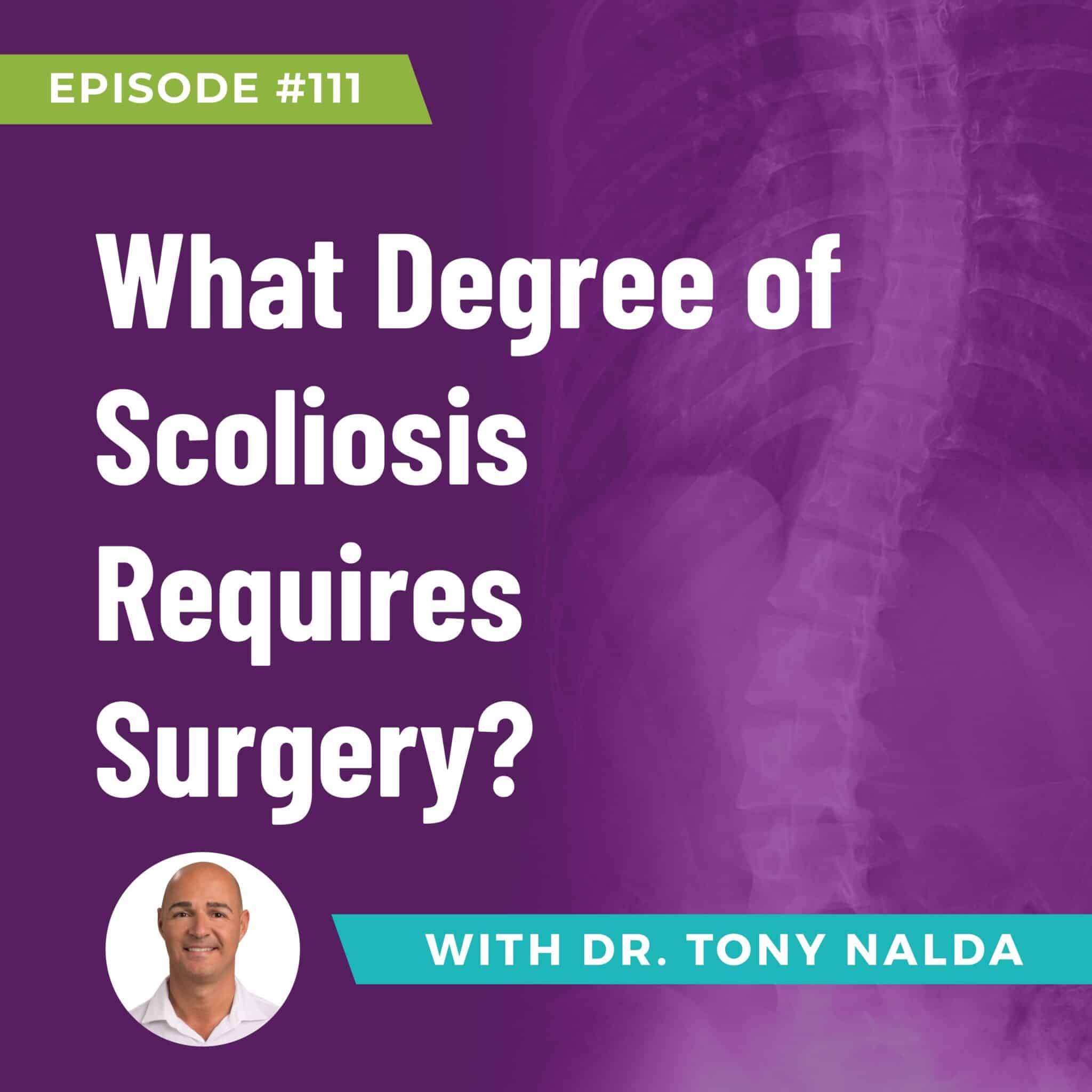Episode 111: What Degree of Scoliosis Requires Surgery?
In today's episode, we dive deep into the treatment of scoliosis, focusing particularly on strategies to avoid surgery. Scoliosis, a complex spinal condition characterized by curvature and twisting, is typically diagnosed via an X-ray that measures the Cobb angle. This angle helps classify the condition into mild (10-25 degrees), moderate (25-40 degrees), and severe (over 40 degrees) categories.
Table of Contents
The Surgical Dilemma
Scoliosis surgery, recommended for severe cases with curves past 40 degrees, is an invasive procedure involving spinal fusion with rods and screws. The recovery is lengthy and the surgery often results in a permanently altered spine, reduced flexibility, and potential for future complications. Given its complexity, surgery is generally seen as a last resort.
Conservative Approaches to Scoliosis
Most traditional treatments for mild to moderate scoliosis are passive, involving observation until surgical intervention becomes necessary. However, this "watch and wait" approach can be frustrating for patients seeking early intervention to prevent their condition from worsening.
Introducing Intensive Scoliosis Treatment
Unlike traditional methods, intensive scoliosis treatment offers a proactive approach. This method involves short-duration, high-dose treatment designed to reduce curvature effectively. The goal is to treat smaller curves early to prevent them from reaching severe levels that might require surgery.
This type of treatment is complemented by conservative approaches such as customized bracing and home therapy exercises. These methods not only aim to reduce the curve but also to maintain the spine's functionality, ensuring the body continues to move and function normally.
Customized Care at the Scoliosis Reduction Center
The Scoliosis Reduction Center offers comprehensive evaluations to design a personalized treatment plan based on the patient’s age, flexibility, and functional needs. This might include customized bracing and a tailored home therapy program, emphasizing a non-surgical path to managing scoliosis.
Conclusion
For those facing the prospect of scoliosis surgery, exploring conservative treatment options can provide alternatives that potentially prevent the need for invasive procedures. If you or a loved one is dealing with scoliosis, it's crucial to consider all available treatments to make an informed decision about the best course of action.
For more insights and expert advice on managing scoliosis without surgery, stay tuned to our podcast and don't forget to subscribe for updates on new content.
Artlist.io 847544
Podcast: Play in new window | Download
Subscribe: RSS
Dr. Tony Nalda
DOCTOR OF CHIROPRACTIC
After receiving an undergraduate degree in psychology and his Doctorate of Chiropractic from Life University, Dr. Nalda settled in Celebration, Florida and proceeded to build one of Central Florida’s most successful chiropractic clinics.
His experience with patients suffering from scoliosis, and the confusion and frustration they faced, led him to seek a specialty in scoliosis care. In 2006 he completed his Intensive Care Certification from CLEAR Institute, a leading scoliosis educational and certification center.
About Dr. Tony Nalda
 Ready to explore scoliosis treatment? Contact Us Now
Ready to explore scoliosis treatment? Contact Us Now








